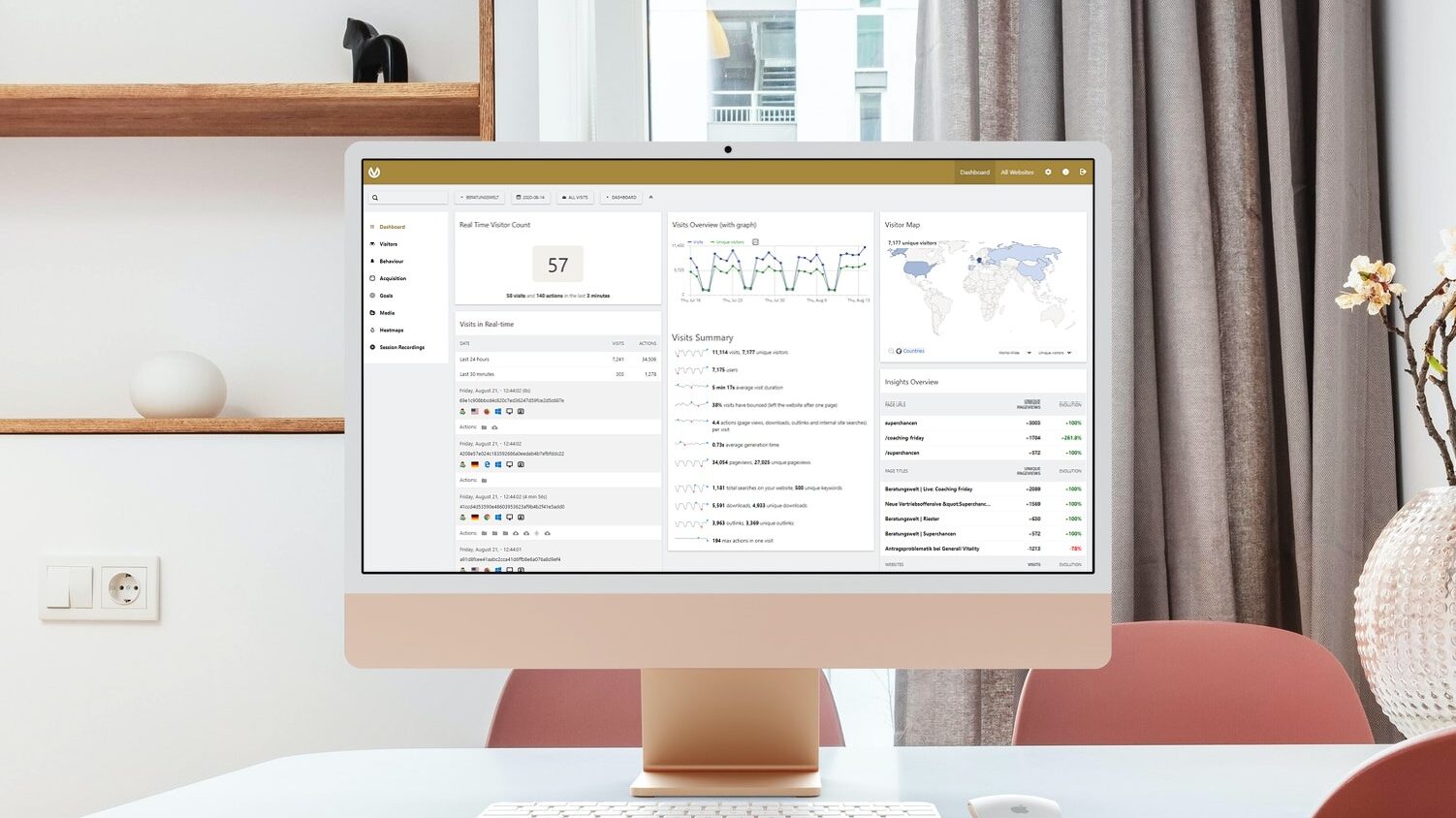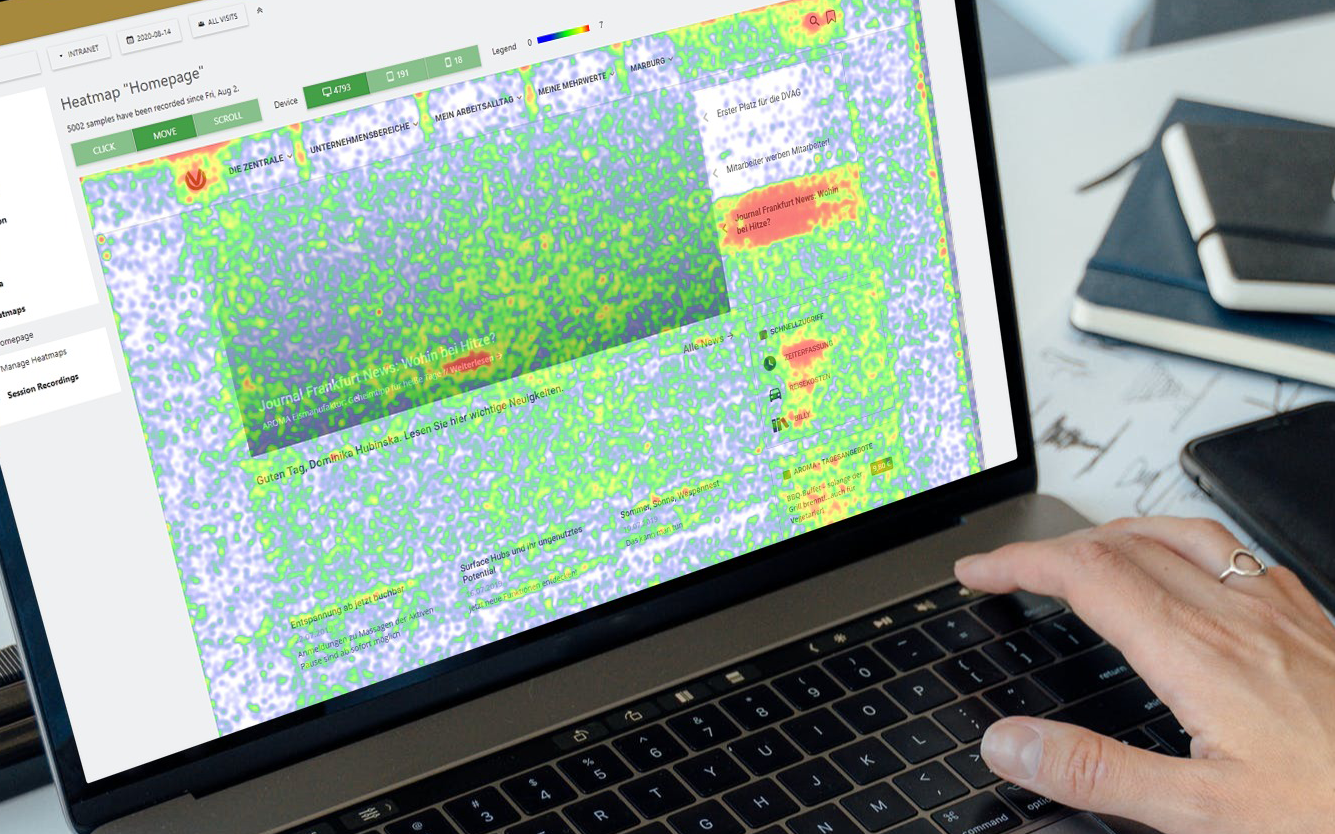

11 best practices of intranet analytics to track engagement
The main task of the intranet is to improve internal communication, create a common digital workspace for all employees where they can easily share their knowledge and documents. But how can you know if it’s doing its job?
How do find out which activities employees perform most often and what kind of content they like? The answer is intranet analytics. Thanks to the collected data, you can find out what you can do better and adjust further actions to the employees’ needs.
How to improve employee engagement?
The deployment of the intranet and the activities undertaken by internal communication managers in the digital workplace mainly aim at increasing the employee experience. The desire for improvement in this field is huge. That is why companies spend a lot of money and time on implementing digital working systems. They want to provide employees with the most favorable working conditions to engage them in their duties.
Fluent and engaging internal communication is the key, hence the focus on publishing relevant content. However, it is worth checking how the implemented tools and published content affect employees’ productivity. Are they useful? Do they improve internal comms processes? Or perhaps they obstruct the flow of information?
What is intranet analytics for?
Intranet content performance analytics’ main purpose is to highlight the key issues and challenges within your workforce. On the other hand, they can provide a great source of information on what adjustments need to be made to enhance employee engagement and increase the overall revenue for your business. Various intranet platforms available on the market offer a different level of analytics. We recommend considering this aspect when purchasing a new internal communication solution for your organization.
How to track employee experience across all channels?
Imagine that you run an omnichannel information campaign that includes a banner for the intranet homepage, sending a newsletter, and publishing a video. If you use Workai, it provides you with measurement tools that inform you which channels perform well and which require adjustments. For example, if you see that the newsletter’s open rate is not satisfactory, you can send a push notification to those who haven’t read it yet to ensure they engage with the content. All in all, the analytics functionality is easy to use. The tool allows you to make data-driven decisions and meet both employee and business strategy needs to reach your internal communication goals with ease.
TOP 11 intranet areas to measure for better employee engagement
1. Tracking the entire employee journey

Real-time analytics will help you understand how many people are currently signed in, from which location, and the referrer URL. It’s instrumental when you run live events or plan on sending an important newsletter with links to the intranet. This tool gives you a clear picture on what’s the current state of your intranet and how employees interact with the content. Here you can learn where it is best to publish new content. You can discover common patterns and how they differ across business units during different times of the day or month.
2. Employee profiles
A lifetime journey of individual users is shown as summary cards. You can quickly discover the entire history of actions that different users have taken – as a timeline, including all the steps they took, their organizational data, their location, browser, and devices used. Each activity or event is recorded and compared with others’ actions to find patterns and learn why users often visit but never convert. This insight is crucial to optimizing how you arrange your internal channels.
3. Segments and audiences
From here, you get to know all the stats about visit times and days, average duration, returning and bouncing users, the number of actions, or even page load times. You can easily compare different timeframes or different stats – for example, unique users and returning users. You can also create segments based on specific data to use for further comparisons. Imagine all the people who spent at least 2 minutes at a particular page and came from a particular medium, device, and location. Such segments can also be used to target published content. As a result, segments are the basis for highly personalized, thus effective messaging.
4. User behavior
We can learn about entry pages, exit pages, outlinks, and more from all of the information about a user’s interaction with content. These can also be measured in the chosen timeframe, compared with other timeframes and other stats. You can also check file downloads statistics, which is essential because you publish many PDFs with offers, product info, and learning materials, especially if your business model is based on how well-informed your customer service is. If that is the case, your staff needs to update procedures and products regularly, to serve clients more efficiently.
5. Multichannel user flow
Another useful report that allows you to understand how campaigns perform is transitions. Check users’ flow between the particular page, sources that brought people there, and where they go after reaching this page. For example, when running an informational campaign about a new product, we can learn how the traffic splits between a newsletter, popup, homepage banner, promoted news, event page, push notification, and any other source.
6. Internal communication campaigns
Reports about internal campaigns – newsletters, pop-ups, promoted content, banners, in-app notifications, and mobile push notifications. You can check how the campaign performs in time compared to others, which sources convert the most and reach goals. Similar to Google Analytics, campaigns are tracked by URL params so that you can attach them manually to any internal or external link. Thanks to this tool you are the one who is in control, and you steer and adjust campaigns according to your current needs.
7. Campaign goals
Each internal campaign or action can have a specific Goal – page visit, event, file download, link click, visit duration, and more. You can easily set goals and measure conversion in a given timeframe. This is the final report about all measurable actions and can be attached to almost anything. If you want people to download a new booklet, watch a video, listen to a podcast, reach a specific page from a particular source, add a comment, or perform a set of actions – it’s all there.
8. Heatmaps

Heatmaps make it easy and fast to discover where users draw their attention, where they encounter problems, and how engaging the content is. You can use it to test homepage changes, hot/cold areas, CTAs, and banners visibility. Also, heatmaps can help you discover mobile pages’ usability and scroll reach. This is a unique tool for internal communication and building the best user experience – with content and UI.
9. Session recordings
Each user session can be recorded to check how they use the intranet and what experience they have. You can find out why they leave, what they are looking for, and much more. It’s beneficial when we want to see how UI and information architecture changes affect user experience.
10. Intranet media analytics
Whether you want to know how many replays our media gets, finish rates, how the media is consumed over time, how media was consumed on specific days, and which locations users view the content, you can check media analytics for internal or external videos and podcasts. It’s very convenient to know when users stop watching or how many times they watched, especially when comparing those stats with the whole context of campaigns and user flows in real-time. This gives you a clear picture of what brings the most engagement and what lowers it.
11. Intranet search analytics
You can get insights into what employees look for in the intranet. You can see what keywords are searched for, with counts and the number of result pages. Additionally, pages following the search results – where people go after looking for a specific term, or more accurately – which result they pick the most often for a particular term. What is more, search keywords with no results – with counts, this is the most crucial report because it makes you aware that there’s a growing need for more information in a particular area, and if we are talking about tens of thousands of people using ‘Search’ regularly – we have a lot of useful data to analyze.
Why should you measure the performance of your internal comms?
The answer is simple: to evaluate its performance. Tracking and analyzing the choices of your employees supports you in developing the best employee experience. It is good to know which content and in what form your employees prefer. That allows you to implement appropriate changes in subsequent strategies so that they even better meet the needs of employees. By tracking the activities taken by your workers in the digital work environment, you get a chance to learn about their preferences and needs.
You know exactly what you should do to adjust the internal comms to them and to better personalize the intranet. That has a direct impact on the employee experience. All you need is the right intranet analytics tools that will support the analysis of all critical areas.
Using multiple feedback channels to your advantage
There is no coming back to internal communication style, which resembles throwing darts in a crowded room blindfolded, hoping to somehow hit the target. The data feedback you get, thanks to the analytics tool in Workai, is your best friend. It is essential to align your findings with the internal communications team, as well as other stakeholders.
Based on these insights, you can easily draw the right conclusions to revamp employee experience in your organization. This is all the more important under the conditions of employees isolation we have recently experienced.
How does Workai support internal comms managers to track engagement with intranet analytics?
Workai recognizes the importance of employee experience and therefore always tries to put the employee’s needs first. We offer advanced real-time analysis tools that support internal communication managers to optimize actions during every internal campaign.
Workai allows you to measure the engagement of all employees, content coverage, information flow, and interactions between users. Thanks to advanced solutions, you have full insight into the history of users’ actions and their behavior in the intranet.
It is undoubtedly an ideal starting point for setting campaign goals and measuring KPIs. Additionally, we offer you advanced analysis of searching, downloading, and opening files, multimedia playback, heatmaps, and recording user sessions.

